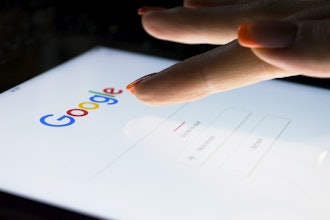NASA Partners with Uber on Flying Car Tech
Artists from NASA's Advanced Concepts Lab recently came up with a concept of the future of air travel. In the concept, you see a number of manned and unmanned drones as well as personal and commercial aircraft flying the friendly skies safely, NASA calls it "urban air mobility."
Uber, the ride-sharing platform that has upended the taxi industry, plans to play a major role in urban air mobility with a fleet of flying taxis that passengers would hail on the company's app, just as they hail the cars today.
This week, NASA signed a space act agreement with Uber. The companies will work together to research concepts and technologies that will make sure that future air transportation is safe, particularly in highly populated areas.
Uber will offer its plans for a network of flying taxis and NASA will use the data at its research facility at Dallas Fort Worth (DFW) International Airport and simulate if and how a small flying taxi with passengers aboard will manage the DFW airspace during peak scheduled air traffic.
Analysis of these simulations will identify safety issues as these new aircraft take to the air in an already crowded air traffic control system.
Harvesting Energy from Rubber Ducks
When it comes to rubber duckies, scientists already know a number of things: they're the one, they make bathtime fun, and they're typically riddled with aggressive bacteria. Well now, researchers may have found a way to make your rubber ducky power your laptop, just don't do it in the tub.
Researchers from JeJu National University in South Korea have found a way to use nanogenerators to harvest energy from the mechanical vibrations. Your duckies squeak could get a lot smarter, and powerful, but the work could alsomean that future toys can ditch the D cells and be self-powered.
Specifically, the researchers use triboelectric nanogenerators, or TENGs, which harvest electrical charges from friction. The researchers made the TENGs using aluminum electrodes with a silicone-like film between tem and put them into rubber ducks and clapping toys. When kids squeeze or shake the toys, the electrodes create a charge that, once activated is powerful enough to for example light up some LEDs on the toy. So your duck's eyes can glow red like the devil. The TENGs are durable, so they can stand up to the abuses of childlike behavior, and remain operational for long periods of time.
In the future, these TENGs could also power other smart gadgets like wearables, medical devices and various other battery powered devices subjected to friction or are often squeezed or shaken.
Facial Recognition Pre-Crime Has Terrible Results
A few weeks ago, we covered Cortica, the Israeli company that has partnered with Best Group in India to analyze closed-circuit video feeds to look for "behavioral anomalies" and identify people about to commit a violent crime.
We suggested that it was a precursor to a pre-crime unit.
Some IEN readers didn't like the prospect:
As TimexSS7 said, "So if I smile, frown, or have an eye twitch at the wrong time, I could be identified as getting ready to do no good? Bull crap."
And M. Alan Dean who said, "Good bye, Liberty. We sure had some great times. I'm going to miss you."
However, others, like limpingandroid, seemed fine with the new surveillance tactic. "Pre-crime is no different than having undercover cops watching people in a crowd to pick out who's going to start a riot."
Well, it turns out that the skepticism is warranted. While it’s too early to get results from India, South Wales Police in Great Britain used facial recognition technology during the 2017 Champions League final (that’s soccer) to identify potential criminals. It flagged 2,470 people, 2,297 of them were false positives. They got about 8% right.
The failure was likely a result of poor image quality and some think that the technology is simply not ready for primetime. The police force did take preventative measures such as reviewing the alerts to see if they are authentic, which has prevented the “intervention team” from making any bad arrests. While it’s good that nobody was locked up over a false positive, and I’m no policeman, but I know that I’d be a little upset if 92% of my workday was a waste of time.
The police were actually quick to defend the technology, adding that the facial recognition system had provided 2,000 IDs over a nine month period which led to 450 arrests. No false positives were taken into custody, but to make 2,000 positive IDs, that means the system likely flagged 25,000 people.
This is Engineering By Design.






















